Exploring the Global Research Trends of Land Use Planning Based on a Bibliometric Analysis: Current Status and Future Prospects
Abstract
1. Introduction
- (1)
- What was the development trend of land use planning during the 1990–2019 period?
- (2)
- What is the current research status of land use planning?
- (3)
- How have the main themes of land use planning evolved?
- (4)
- What are the focus and direction of future research in the field of land use planning?
2. Data sources and Methodology
2.1. Data Sources
2.2. Methodology
2.2.1. Bibliometric Tools Based on R Language
2.2.2. CiteSpace
2.2.3. Multiple Correspondence Analysis
3. Results and Discussion
3.1. Literature Timing Analysis
3.2. Citation Context Analysis of Land Use Planning Research
3.3. Analysis of the Main Authors
3.4. Main Research Country/Region Distribution Characteristics.
3.5. Keywords Analysis
3.5.1. High-Frequency Keyword Analysis
3.5.2. Burst Keyword Analysis
3.5.3. Cluster Analysis and Multivariate Statistical Analysis of the High-Frequency Keywords
3.6. Thematic Evolution Analysis of Land Use Planning
3.6.1. Impact of Land Use Planning on Ecosystem Protection
- ①
- landscape ecology→planning→conservation→landscape.
- ②
- landscape planning→land-use planning→management, landscape, planning.
- ③
- nature conservation→landscape planning, conservation planning, environment management→landscape→climate change.
3.6.2. Land Use Planning and Research Investigating the Impact of Climate Change and Natural Environment Changes
- ①
- land planning→environment management→climate change.
3.6.3. Relationships among Land Use Planning, Urban Expansion and Agricultural Development
- ①
- urbanization→planning→agriculture→land use planning.
- ②
- urban sprawl→land use planning→agriculture.
3.6.4. Information Technology Development in the Context of Land Use Planning
- ①
- decision support system→land use planning→landscape.
- ②
- geographic information system→habitant fragmentation, planning→landscape.
4. Conclusions and Prospects
- (1)
- The results show that the number of research articles concerning land use planning has continued to increase from the perspective of publication trends. Especially after 2014, the number of papers has rapidly increased; this trend can be divided into the following four stages: the initial exploration stage, the preliminary growth stage, the stable development stage and the rapid development stage. From the perspective of the citations of the examined papers, the more extensive development stages of land use planning research occurred in 2002, 2005 and 2010. In general, the importance of land use planning research and the number of scholars participating in such research have gradually increased over time.
- (2)
- Regarding the countries participating in land use planning research, developed countries, such as European countries and the United States, conduct a large proportion of related research; as a developing country, China also occupies a critical position in land use planning. The most common keywords in the research field are land use planning, land use, GIS, urban planning, China, spatial planning and climate change. The earliest burst keyword is landscape ecology. The keyword bursts that began in 2005 and continued to the present are land use change, urban planning, ecosystem services, and spatial planning.
- (3)
- A cluster analysis of the high-frequency keywords concludes that future research should conduct the following: ➀ clarify and coordinate the relationship between land use changes and spatial/regional planning, ➁ improve the implementation of land use planning information technology, ➂ prioritize public participation in the planning process and actively solicit opinions and suggestions from the public, relevant government departments and other social sectors regarding research strategies, and ➃ balance the relationships among land use planning, environmental protection and ecological systems. In addition, it is an important research direction in the field of land use planning to pay attention to the restriction and guiding role of land use planning in urban expansion and sustainable development.
- (4)
- The research topics examined are divided into the following four evolutionary directions: research concerning the impact of land use planning on the protection of ecosystems, research concerning the impact of land use planning on climate change and natural environmental changes, research concerning the effects of land use planning on urbanization and agricultural development, and the development of information technology for land use planning.
- (1)
- Scholars from different disciplines have different focuses regarding land use planning issues. Geographers focus on a description of phenomena and characteristics of land use planning; economists focus on studies investigating the driving mechanisms of land use planning; planners focus on controlling land supplement and demand through planning and designing tools and restrictive policies; sociologists focus on studying social issues in land use planning; and environmentalists focus on the ecological issues caused by urban expansion. Regarding land use planning studies, continuity between disciplines and comprehensive interdisciplinary research are lacking. Therefore, there are only in-depth and meticulous research examples of land use planning mechanisms and governance strategies. In addition, strengthening dialogue and communication between disciplines can fundamentally solve these problems.
- (2)
- Currently, the research concerning land use planning mostly stays at the level of recommendations. Scholars from different disciplines have proposed corresponding policy recommendations from the perspectives of their respective disciplines, and systematic research concerning land use policy is lacking. There are few assessments of the effects of specific policy implementations. In addition, these studies often do not consider the developer’s response to plans and regulations. Therefore, strengthening the supervision and self-restraint mechanism of land use behavior, clarifying the land property system and evaluating the performance of land use planning are the focuses of future research in the field of urban expansion.
Author Contributions
Funding
Institutional Review Board Statement
Informed Consent Statement
Data Availability Statement
Conflicts of Interest
References
- Herzig, A.; Nguyen, T.T.; Ausseil, A.G.E.; Maharjan, G.R.; Dymond, J.R.; Arnhold, S.; Koellner, T.; Rutledge, D.; Tenhunen, J. Assessing resource-use efficiency of land use. Environ. Model. Softw. 2018, 107, 34–49. [Google Scholar] [CrossRef]
- Duan, C.; Shi, P.L.; Song, M.H.; Zhang, X.Z.; Zong, N.; Zhou, C.P. Land Use and Land Cover Change in the Kailash Sacred Landscape of China. Sustainability 2019, 11, 1788. [Google Scholar] [CrossRef]
- Simeoni, P.; Lebot, V. Spatial Representation of Land Use and Population Density: Integrated Layers of Data Contribute to Environmental Planning in Vanuatu. Hum. Ecol. 2012, 40, 541–555. [Google Scholar] [CrossRef]
- Le Bivic, C.; Melot, R. Scheduling urbanization in rural municipalities: Local practices in land-use planning on the fringes of the Paris region. Land Use Policy 2020, 99, 105040. [Google Scholar] [CrossRef]
- Tang, B.S.; Ho, W.K.O. Land-use planning and market adjustment under de-industrialization: Restructuring of industrial space in Hong Kong. Land Use Policy 2015, 43, 28–36. [Google Scholar] [CrossRef]
- Squillace, M. Rethinking public land use planning. Harv. Environ. Law Rev. 2019, 43, 415–478. [Google Scholar] [CrossRef]
- Kumar, P.; Rao, K.V.; Ravindranath, S.; Maithani, S.; Siddiqui, A.; Bharath, B.D.; Bhavani, S.V.L. A Review of IRS-1C Applications in Urban and Regional Studies, and Infrastructure Planning. J. Indian Soc. Remote Sens 2021, 49, 161–177. [Google Scholar] [CrossRef]
- Zhong, H.S.; Hall, R.W.; Dessouky, M. Territory planning and vehicle dispatching with driver learning. Transp. Sci. 2007, 41, 74–89. [Google Scholar] [CrossRef]
- Matasuoka, R.H.; Kaplan, R. People needs in the urban landscape: Analysis of Landscape and Urban Planning contributions. Landsc. Urban Plan. 2008, 84, 7–19. [Google Scholar] [CrossRef]
- Icaza, L.E.; van den Dobbelsteen, A.; van der Hoeven, F. Integrating Urban Heat Assessment in Urban Plans. Sustainability 2016, 8, 320. [Google Scholar] [CrossRef]
- Owen, C.R.; Jacobs, H.M. Wetland protection as land-use planning—The impact of section-404 in Wisconsin, USA. Environ. Manag. 1992, 16, 345–353. [Google Scholar] [CrossRef]
- Henger, R.; Bizer, K. Tradable planning permits for land-use control in Germany. Land Use Policy 2010, 27, 843–852. [Google Scholar] [CrossRef]
- White, M.; Allmendinger, P. Land-use planning and the housing market: A comparative review of the UK and the USA. Urban Stud. 2003, 40, 953–972. [Google Scholar] [CrossRef]
- Himiyama, Y. Historical information bases for land use planning in Japan. Land Use Policy 1999, 16, 145–151. [Google Scholar] [CrossRef]
- Pierce, J.C.; Budd, W.W.; Lovrich, N.P. Resilience and sustainability in US urban areas. Environmental Politics. 2011, 20, 566–584. [Google Scholar] [CrossRef]
- Walton, W. Windfall sites for housing: An underestimated resource. Urban Stud. 2000, 37, 391–409. [Google Scholar] [CrossRef]
- Chang, N.B.; Yeh, S.C.; Wu, G.C. Stability analysis of grey compromise programming and its application to watershed land-use planning. Int. J. Syst. Sci. 1999, 30, 571–589. [Google Scholar] [CrossRef]
- Mosadeghi, R.; Warnken, J.; Tomlinson, R.; Mirfenderesk, H. Comparison of Fuzzy-AHP and AHP in a spatial multi-criteria decision making model for urban land-use planning. Comput. Environ. Urban Syst. 2015, 49, 54–65. [Google Scholar] [CrossRef]
- Shen, Q.P.; Chen, Q.; Tang, B.S.; Yeung, S.; Hu, Y.C.; Cheung, G. A system dynamics model for the sustainable land use planning and development. Habitat Int. 2009, 33, 15–25. [Google Scholar] [CrossRef]
- Jeganathan, C.; Roy, P.S.; Jha, M.N. Multi-Objective Spatial Decision Model for Land Use Planning in a Tourism District of India. J. Environ. Inform. 2011, 17, 15–24. [Google Scholar] [CrossRef]
- Vaszocsik, V.; Vajdovich-Visy, E. Integrated land use models for spatial planning support:country-specific solutions. Deturope-Cent. Eur. J. Reg. Dev. Tour. 2017, 9, 12–28. [Google Scholar]
- Riveira, I.; Maseda, R.C. A review of rural land-use planning models. Environ. Plan. B Plan. Des. 2006, 33, 165–183. [Google Scholar] [CrossRef]
- Geneletti, D.; La Rosa, D.; Spyra, M.; Cortinovis, C. A review of approaches and challenges for sustainable planning in urban peripheries. Landsc. Urban Plan. 2017, 165, 231–243. [Google Scholar] [CrossRef]
- Ayambire, R.A.; Amponsah, O.; Peprah, C.; Takyi, S.A. A review of practices for sustaining urban and peri-urban agriculture: Implications for land use planning in rapidly urbanising Ghanaian cities. Land Use Policy 2019, 84, 260–277. [Google Scholar] [CrossRef]
- Xie, H.; Zhang, Y.; Wu, Z.; Lv, T. A bibliometric analysis on land degradation: Current status, development, and future directions. Land. 2020, 9, 28. [Google Scholar] [CrossRef]
- Zhang, Y.W.; Xie, H.L. Interactive Relationship among Urban Expansion, Economic Development, and Population Growth since the Reform and Opening up in China: An Analysis Based on a Vector Error Correction Model. Land. 2019, 8, 153. [Google Scholar] [CrossRef]
- Xie, H.L.; Huang, Y.Q.; Chen, Q.R.; Zhang, Y.W.; Wu, Q. Prospects for Agricultural Sustainable Intensification: A Review of Research. Land 2019, 8, 157. [Google Scholar] [CrossRef]
- Bornmann, L.; Marx, W. Critical rationalism and the search for standard (field-normalized) indicators in bibliometrics. J. Informetr. 2018, 12, 598–604. [Google Scholar] [CrossRef]
- Aria, M.; Cuccurullo, C. Bibliometrix: An R-tool for comprehensive science mapping analysis. J. Informetr. 2017, 11, 959–975. [Google Scholar] [CrossRef]
- Zhang, L.; Ouyang, Z.Y. Exploring the Relationships between Key Ecological Indicators to Improve Natural Conservation Planning at Different Scales. Forests 2019, 10, 32. [Google Scholar] [CrossRef]
- Gobster, P.H. (Text) Mining the LANDscape: Themes and trends over 40 years of Landscape and Urban Planning. Landsc. Urban Plan. 2014, 126, 21–30. [Google Scholar] [CrossRef]
- Huang, Y.; Zhu, D.; Lv, Q.; Porter, A.L.; Robinson, D.K.R.; Wang, X. Early insights on the Emerging Sources Citation Index (ESCI): An overlay map-based bibliometric study. Scientometr. 2017, 111, 2041–2057. [Google Scholar] [CrossRef]
- Xie, H.L.; Zhang, Y.W.; Choi, Y.; Li, F.Q. A Scientometrics Review on Land Ecosystem Service Research. Sustainability 2020, 12, 2959. [Google Scholar] [CrossRef]
- Lv, T.G.; Wang, L.; Xie, H.L.; Zhang, X.M.; Zhang, Y.W. Evolutionary overview of water resource management (1990–2019) based on a bibliometric analysis in Web of Science. Ecol. Inform. 2021, 61, 101218. [Google Scholar] [CrossRef]
- Xie, H.L.; Wen, Y.Y.; Choi, Y.; Zhang, X.M. Global Trends on Food Security Research:A Bibliometric Analysis. Land 2021, 10, 119. [Google Scholar] [CrossRef]
- Stewart, T.J.; Janssen, R.; van Herwijnen, M. A genetic algorithm approach to multiobjective land use planning. Comput. Oper. Res. 2004, 31, 2293–2313. [Google Scholar] [CrossRef]
- Sebos, I.; Progiou, A.; Symeonidis, P.; Ziomas, I. Land-use planning in the vicinity of major accident hazard installations in Greece. J. Hazard. Mater. 2010, 179, 901–910. [Google Scholar] [CrossRef]
- Dai, F.C.; Lee, C.F.; Zhang, X.H. GIS-based geo-environmental evaluation for urban land-use planning: A case study. Eng. Geol. 2001, 61, 257–271. [Google Scholar] [CrossRef]
- Lestrelin, G.; Bourgoin, J.; Bouahom, B.; Castella, J.C. Measuring participation: Case studies on village land use planning in northern Lao PDR. Appl. Geogr. 2011, 31, 950–958. [Google Scholar] [CrossRef]
- Zhao, Y.; Lin, Q.W.; Ke, S.G.; Yu, Y.H. Impact of land use on bicycle usaqe: A big data-based spatial approach to inform transport planning. J. Transp. Land Use. 2020, 13, 299–316. [Google Scholar] [CrossRef]
- Schjetnan, M.; Perez, L. Ecology in landscape architecture: The Xochimilco Park, Southern Mexico. Archit. D Aujourd Hui 1999, 324, 31–34. [Google Scholar]
- Tang, Z.H.; Hussey, C.M.; Wei, T. Assessing local land use planning’s awareness, analysis, and actions for climate change. Int. J. Clim. Chang. Strateg. Manag. 2009, 1, 368–381. [Google Scholar] [CrossRef]
- Gallardo, M.; Martinez-Vega, J. Three decades of land-use changes in the region of Madrid and how they relate to territorial planning. Eur. Plan. Stud. 2016, 24, 1016–1033. [Google Scholar] [CrossRef]
- Liu, J.X.; Wang, M.L.; Yang, L.C. Assessing Landscape Ecological Risk Induced by Land-Use/Cover Change in a County in China: A GIS- and Landscape-Metric-Based Approach. Sustainability 2020, 12, 9037. [Google Scholar] [CrossRef]
- Luan, C.; Liu, R.; Peng, S. Land-use suitability assessment for urban development using a GIS-based soft computing approach: A case study of Ili Valley, China. Ecol. Indic. 2021, 123, 107333. [Google Scholar] [CrossRef]
- Tezel, D.; Buyukdemircioglu, M.; Kocaman, S. Accurate assessment of protected area boundaries for land use planning using 3D GIS. Geocarto Int. 2021, 36, 96–109. [Google Scholar] [CrossRef]
- Golobic, M.; Marusic, I. Developing an integrated approach for public participation: A case of land-use planning in Slovenia. Environ. Plan. B Plan. Des. 2007, 34, 993–1010. [Google Scholar] [CrossRef]
- Aitken, M. A three-dimensional view of public participation in Scottish land-use planning: Empowerment or social control? Plan. Theory 2010, 9, 248–264. [Google Scholar] [CrossRef]
- Pauleit, S.; Duhme, F. Assessing the environmental performance of land cover types for urban planning. Landsc. Urban Plan. 2000, 52, 1–20. [Google Scholar] [CrossRef]
- Persson, C. Deliberation or doctrine? Land use and spatial planning for sustainable development in Sweden. Land Use Policy 2013, 34, 301–313. [Google Scholar] [CrossRef]
- Yao, G.H.; Ke, C.Q.; Zhang, J.H.; Lu, Y.Y.; Zhao, J.M.; Lee, H. Surface deformation monitoring of Shanghai based on ENVISAT ASAR and Sentinel-1A data. Environ. Earth Sci. 2019, 78, 225. [Google Scholar] [CrossRef]
- Cobo, M.J.; Lopez-Herrera, A.G.; Herrera-Viedma, E.; Herrera, F. Science Mapping Software Tools: Review, Analysis, and Cooperative Study among Tools. J. Am. Soc. Inf. Sci. Technol. 2011, 62, 1382–1402. [Google Scholar] [CrossRef]
- Costanza, R.; d’Arge, R.; de Groot, R.; Farber, S.; Grasso, M.; Hannon, B.; Limburg, K.; Naeem, S.; O’Neill, R.V.; Paruelo, J.; et al. The value of the world’s ecosystem services and natural capital. Nature 1997, 387, 253–260. [Google Scholar] [CrossRef]
- Underwood, J.G.; Francis, J.; Gerber, L.R. Incorporating biodiversity conservation and recreational wildlife values into smart growth land use planning. Landsc. Urban Plan. 2011, 100, 136–143. [Google Scholar] [CrossRef]
- Stokes, D.L.; Hanson, M.F.; Oaks, D.D.; Straub, J.E.; Ponio, A.V. Local Land-Use Planning to Conserve Biodiversity: Planners’ Perspectives on What Works. Conserv. Biol. 2010, 24, 450–460. [Google Scholar] [CrossRef]
- Groves, C.R.; Jensen, D.B.; Valutis, L.L.; Redford, K.H.; Shaffer, M.L.; Scott, J.M.; Baumgartner, J.V.; Higgins, J.V.; Beck, M.W.; Anderson, M.G. Planning for biodiversity conservation: Putting conservation science into practice. Bioscience 2002, 52, 499–512. [Google Scholar] [CrossRef]
- Gagne, S.A.; Eigenbrod, F.; Bert, D.G.; Cunnington, G.M.; Olson, L.T.; Smith, A.C.; Fahrig, L. A simple landscape design framework for biodiversity conservation. Landsc. Urban Plan. 2015, 136, 13–27. [Google Scholar] [CrossRef]
- Reyers, B.; O’Farrell, P.J.; Nel, J.L.; Wilson, K. Expanding the conservation toolbox: Conservation planning of multifunctional landscapes. Landsc. Ecol. 2012, 27, 1121–1134. [Google Scholar] [CrossRef]
- Wang, M.; Guan, D.X.; Wang, Y.S.; Hao, Z.Q.; Liu, Y.Q. Estimate of productivity in ecosystem of the broad-leaved Korean pine mixed forest in Changbai Mountain. Sci. China Ser. D Earth Sci. 2006, 49, 74–88. [Google Scholar] [CrossRef]
- Xiao, J.; Xu, W.H.; Kang, D.W.; Li, J.Q. Nature reserve group planning for conservation of giant pandas in North Minshan, China. J. Nat. Conserv. 2011, 19, 209–214. [Google Scholar] [CrossRef]
- Minoia, P.; Calzavara, A.; Lovo, L.; Zanetto, G. An assessment of the principle of subsidiarity in urban planning to face climate change The case of Martellago, Venice Province The case of Martellago, Venice Province. Int. J. Clim. Chang. Strateg. Manag. 2009, 1, 63–74. [Google Scholar] [CrossRef][Green Version]
- Stevens, M.R.; Senbel, M. Are municipal land use plans keeping pace with global climate change? Land Use Policy. 2017, 68, 1–14. [Google Scholar] [CrossRef]
- Burton, I.; Bizikova, L.; Dickinson, T.; Howard, Y. Integrating adaptation into policy: Up scaling evidence from local to global. Clim. Policy. 2007, 7, 371–376. [Google Scholar] [CrossRef]
- Bizikova, L.; Robinson, J.; Cohen, S. Linking climate change and sustainable development at the local level. Clim. Policy. 2007, 7, 271–277. [Google Scholar] [CrossRef]
- Brody, S.D.; Zahran, S.; Grover, H.; Vedlitz, A. A spatial analysis of local climate change policy in the United States: Risk, stress, and opportunity. Landsc. Urban Plan. 2008, 87, 33–41. [Google Scholar] [CrossRef]
- Vincent, A.; Drag, N.; Lyandres, O.; Neville, S.; Hoellein, T. Citizen science datasets reveal drivers of spatial and temporal variation for anthropogenic litter on Great Lakes beaches. Sci. Total Environ. 2017, 577, 105–112. [Google Scholar] [CrossRef] [PubMed]
- Kemp, K.B.; Blades, J.J.; Klos, P.Z.; Hall, T.E.; Force, J.E.; Morgan, P.; Tinkham, W.T. Managing for climate change on federal lands of the western United States: Perceived usefulness of climate science, effectiveness of adaptation strategies, and barriers to implementation. Ecol. Soc. 2015, 20. [Google Scholar] [CrossRef]
- Santos, B. Improving Urban Planning Information, Transparency and Participation in Public Administrations. Int. J. E Plan. Res. 2017, 6, 58–75. [Google Scholar] [CrossRef]
- Weber, S.; Boley, B.B.; Palardy, N.; Gaither, C.J. The impact of urban greenways on residential concerns: Findings from the Atlanta BeltLine Trail. Landsc. Urban Plan. 2017, 167, 147–156. [Google Scholar] [CrossRef]
- Peiser, R. America’s Waterfront Revival: Port Authorities and Urban Redevelopment. J. Am. Plan. Assoc. 2011, 77, 296. [Google Scholar] [CrossRef]
- Gordon, P.; Richardson, H.W. The sprawl debate: Let markets plan. Publius J. Fed. 2001, 31, 131–149. [Google Scholar] [CrossRef]
- Deng, F.F.; Huang, Y.Q. Uneven land reform and urban sprawl in China: The case of Beijing. Prog. Plan. 2004, 61, 211–236. [Google Scholar] [CrossRef]
- Chou, T.L.; Chang, J.Y. Urban sprawl and the politics of land use planning in urban Taiwan. Int. Dev. Plan. Rev. 2008, 30, 67–92. [Google Scholar] [CrossRef]
- Zhu, X.; Aspinall, R.J.; Healey, R.G. ILUDSS: A knowledge-based spatial decision support system for strategic land-use planning. Comput. Electron. Agric. 1996, 15, 279–301. [Google Scholar] [CrossRef]
- Paula, B.M.; Oscar, M.N. Land-use planning based on ecosystem service assessment: A case study in the Southeast Pampas of Argentina. Agric. Ecosyst. Environ. 2012, 154, 34–43. [Google Scholar]
- Long, Y.; Jin, X.B.; Yang, X.H.; Zhou, Y.K. Reconstruction of historical arable land use patterns using constrained cellular automata: A case study of Jiangsu, China. Appl. Geogr. 2014, 52, 67–77. [Google Scholar] [CrossRef]
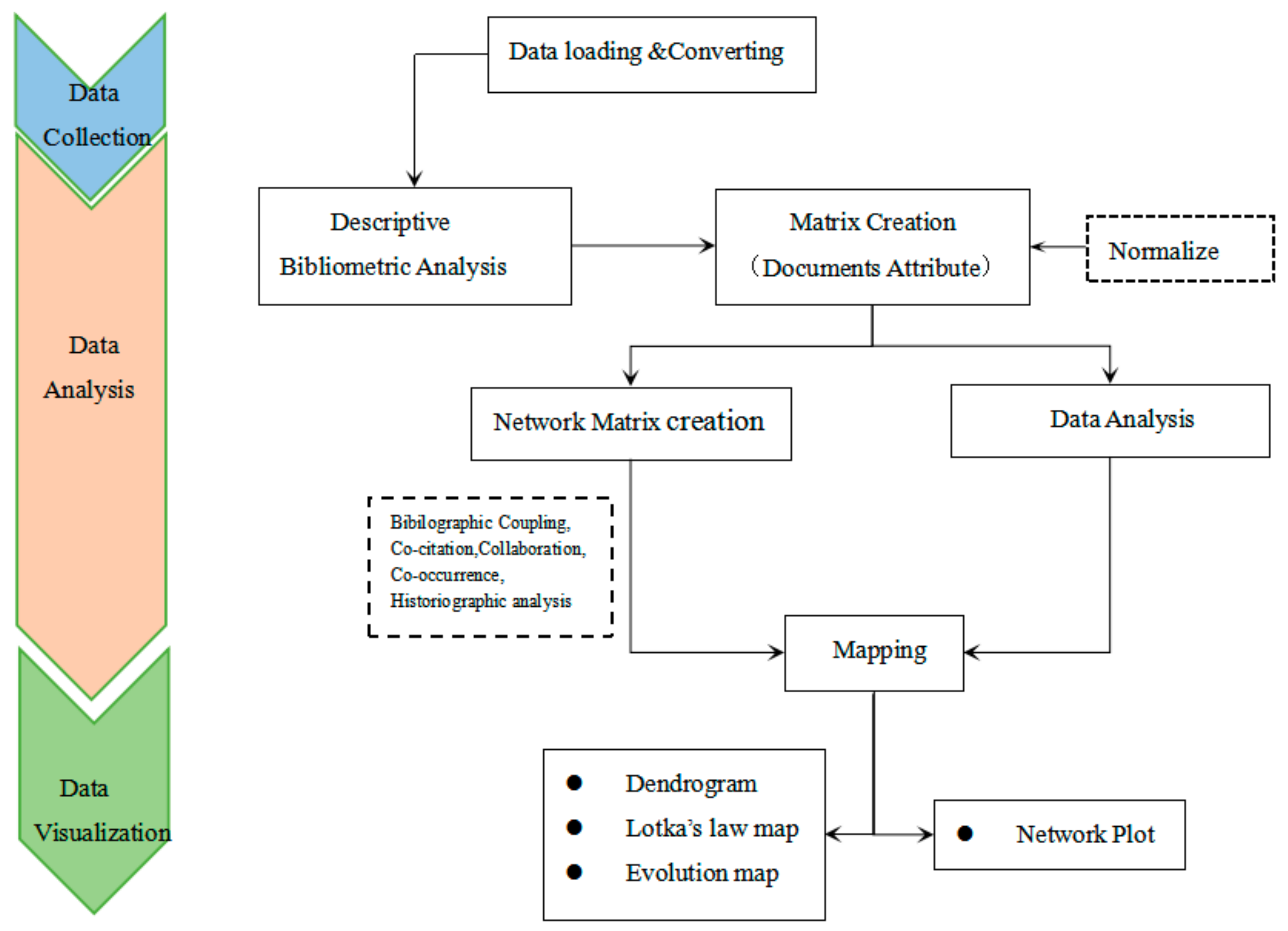

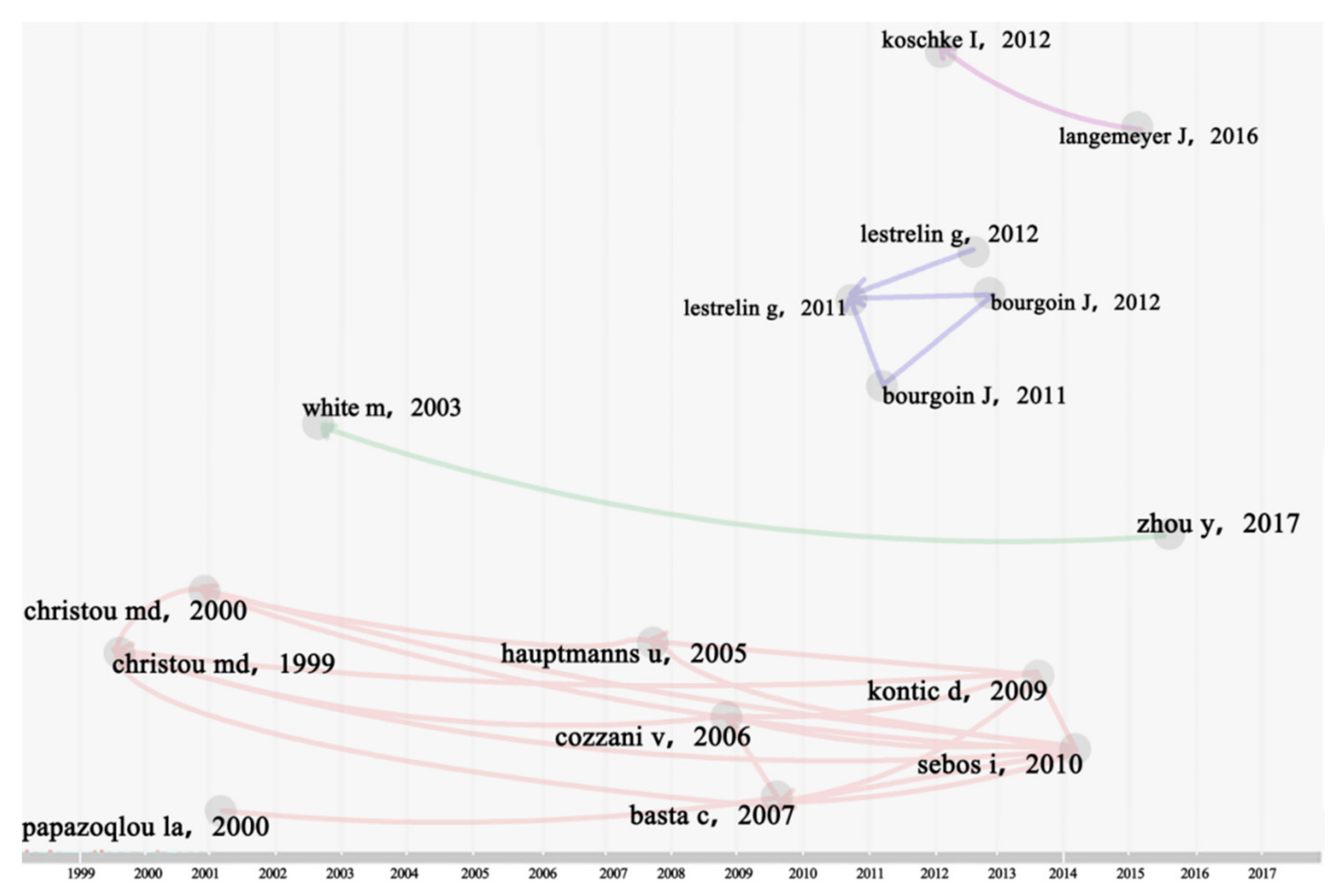
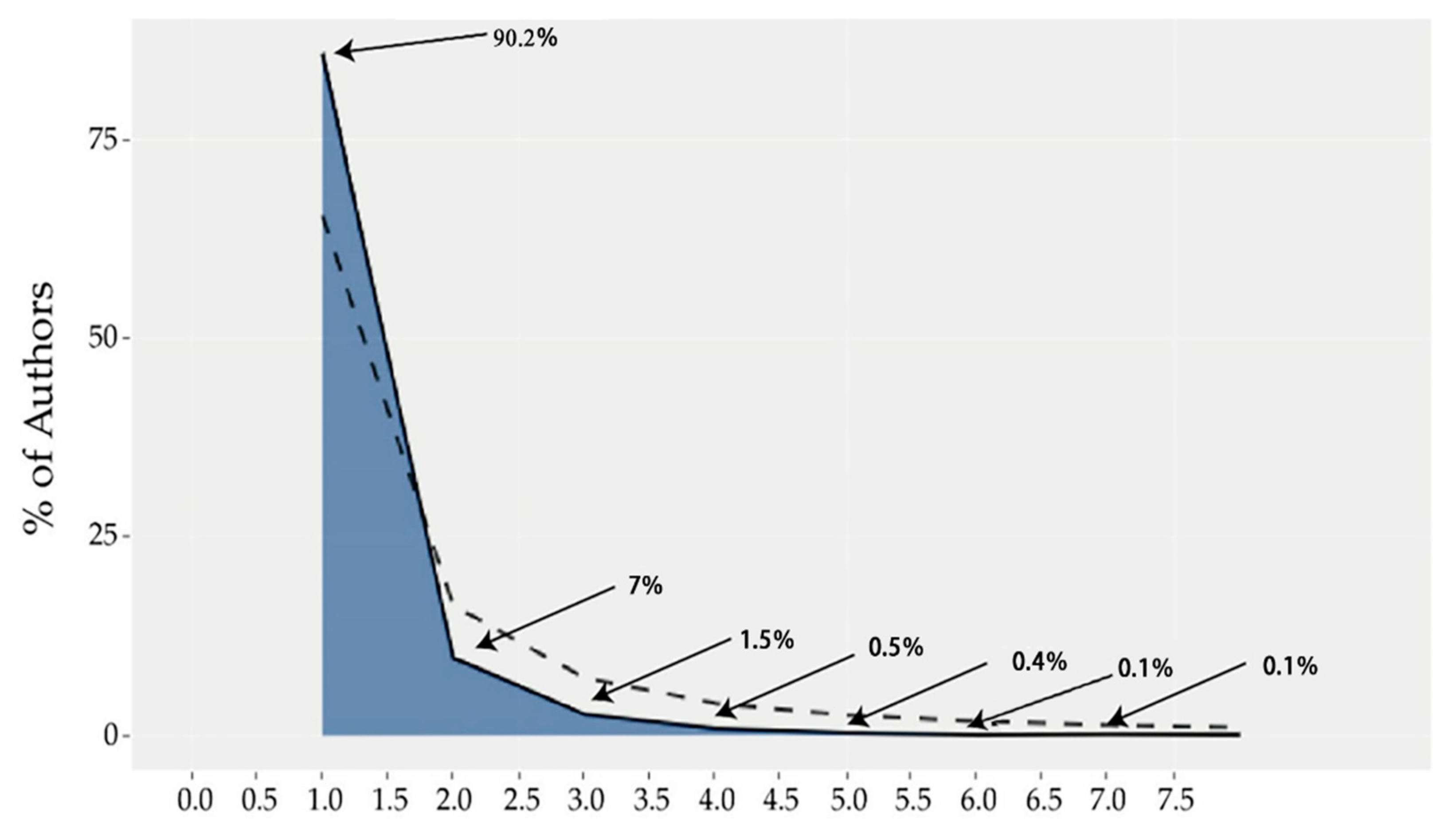
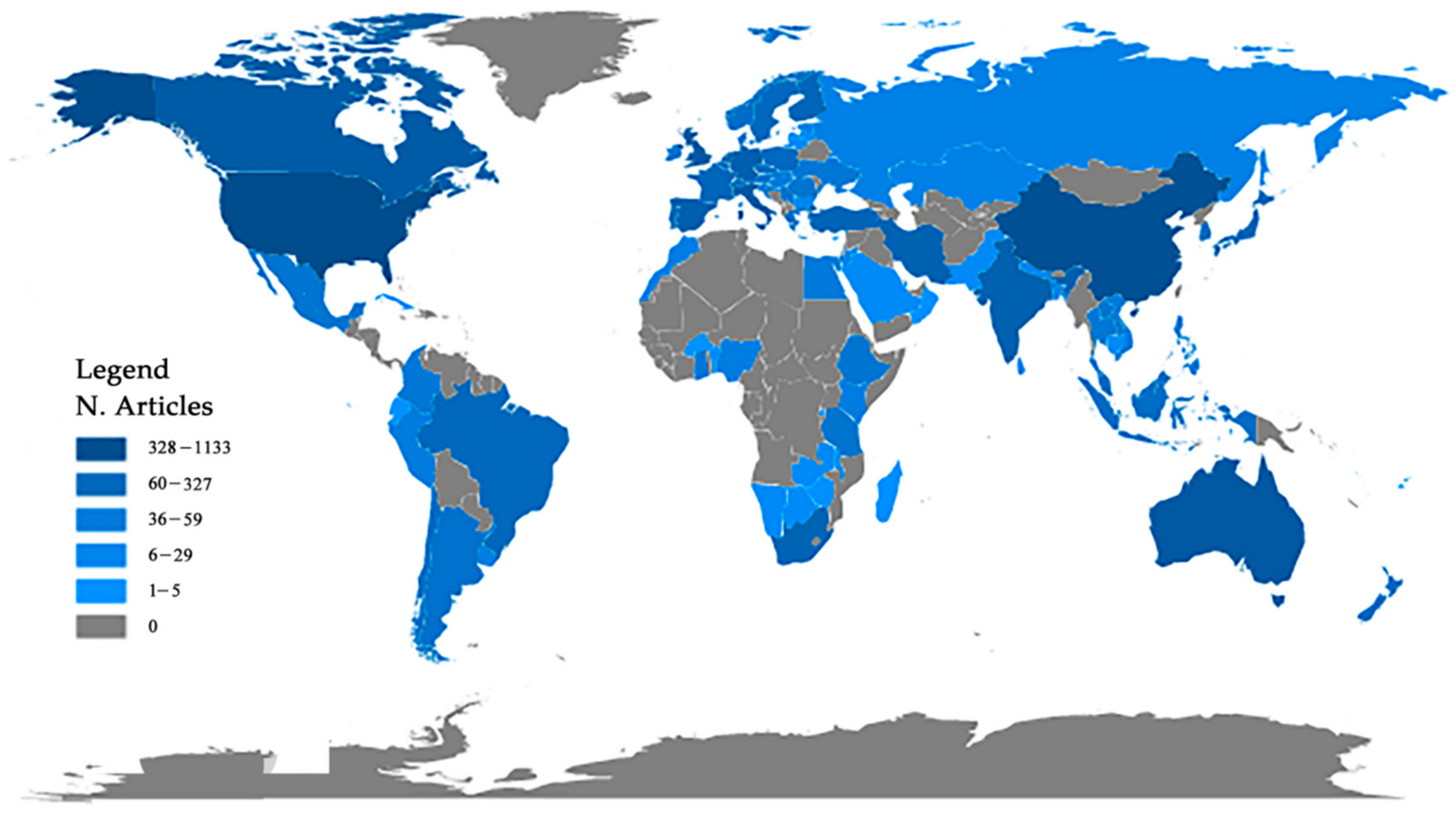


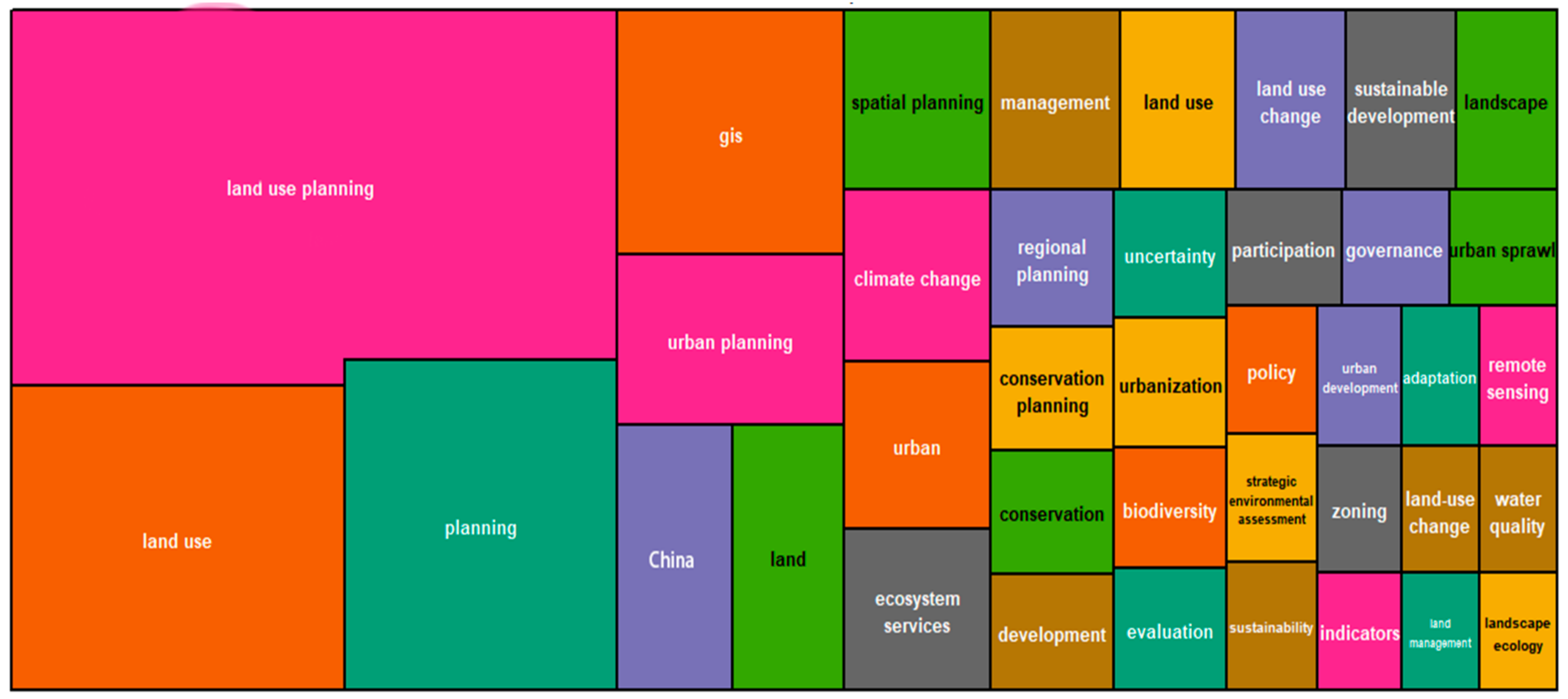

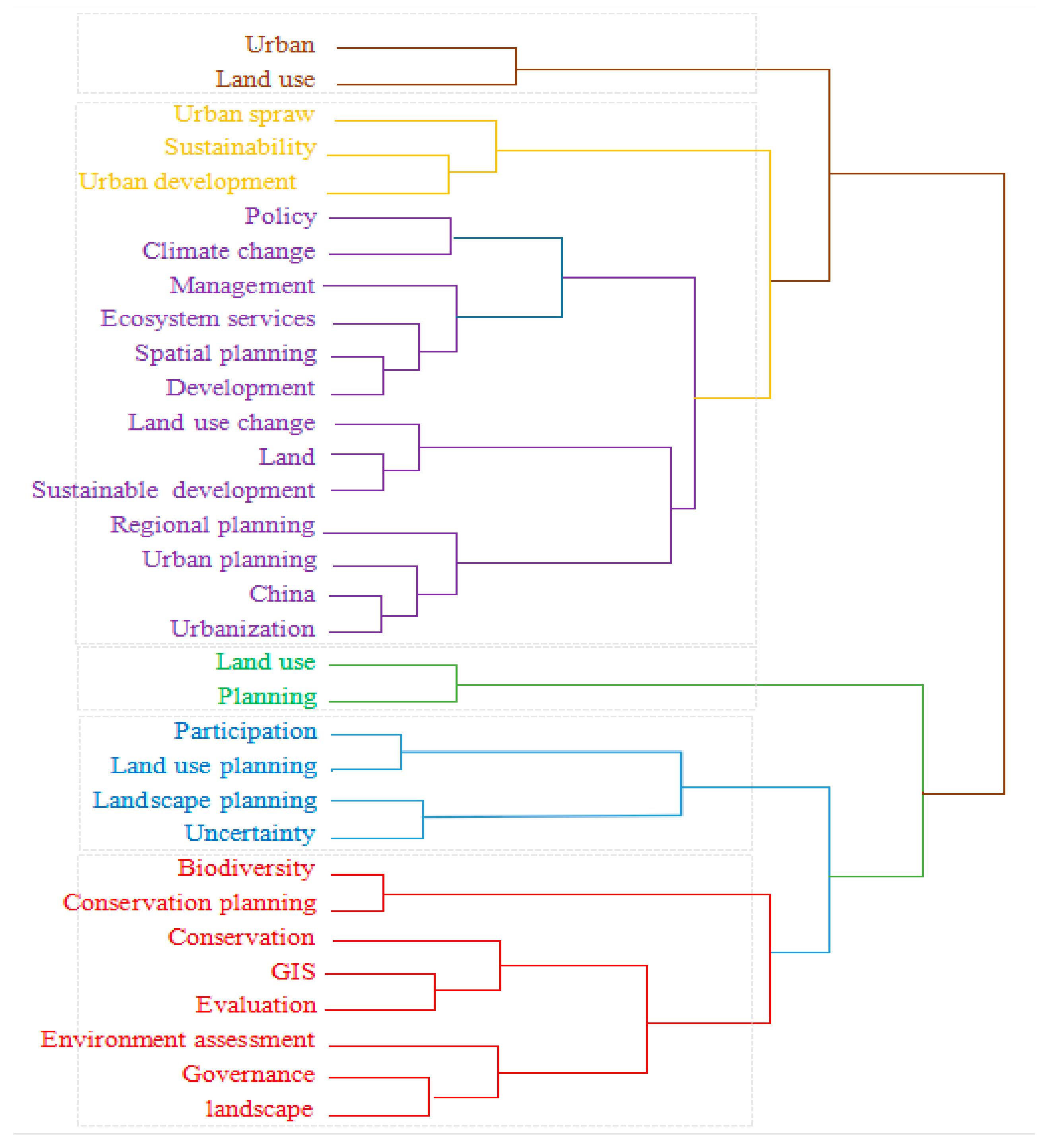
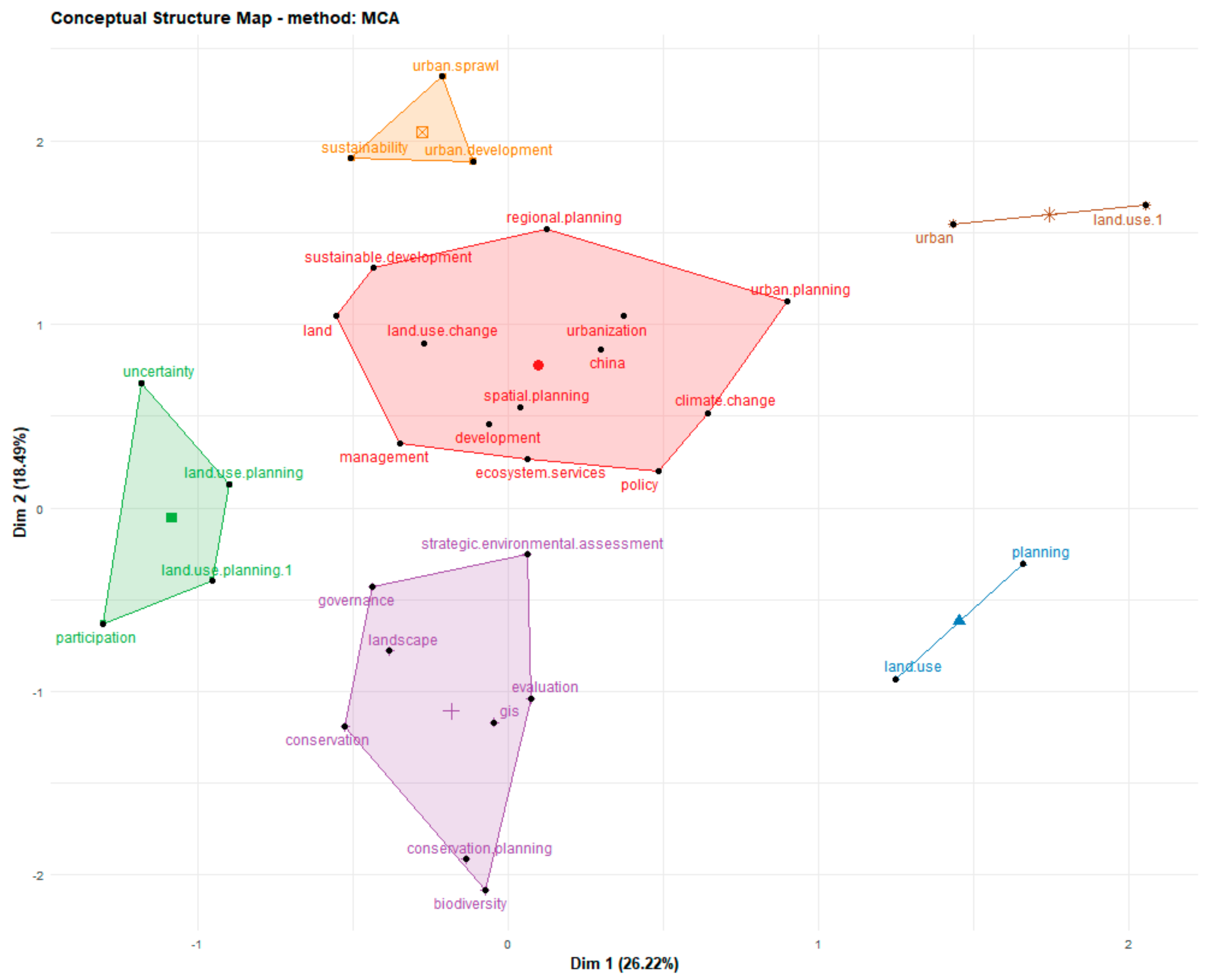
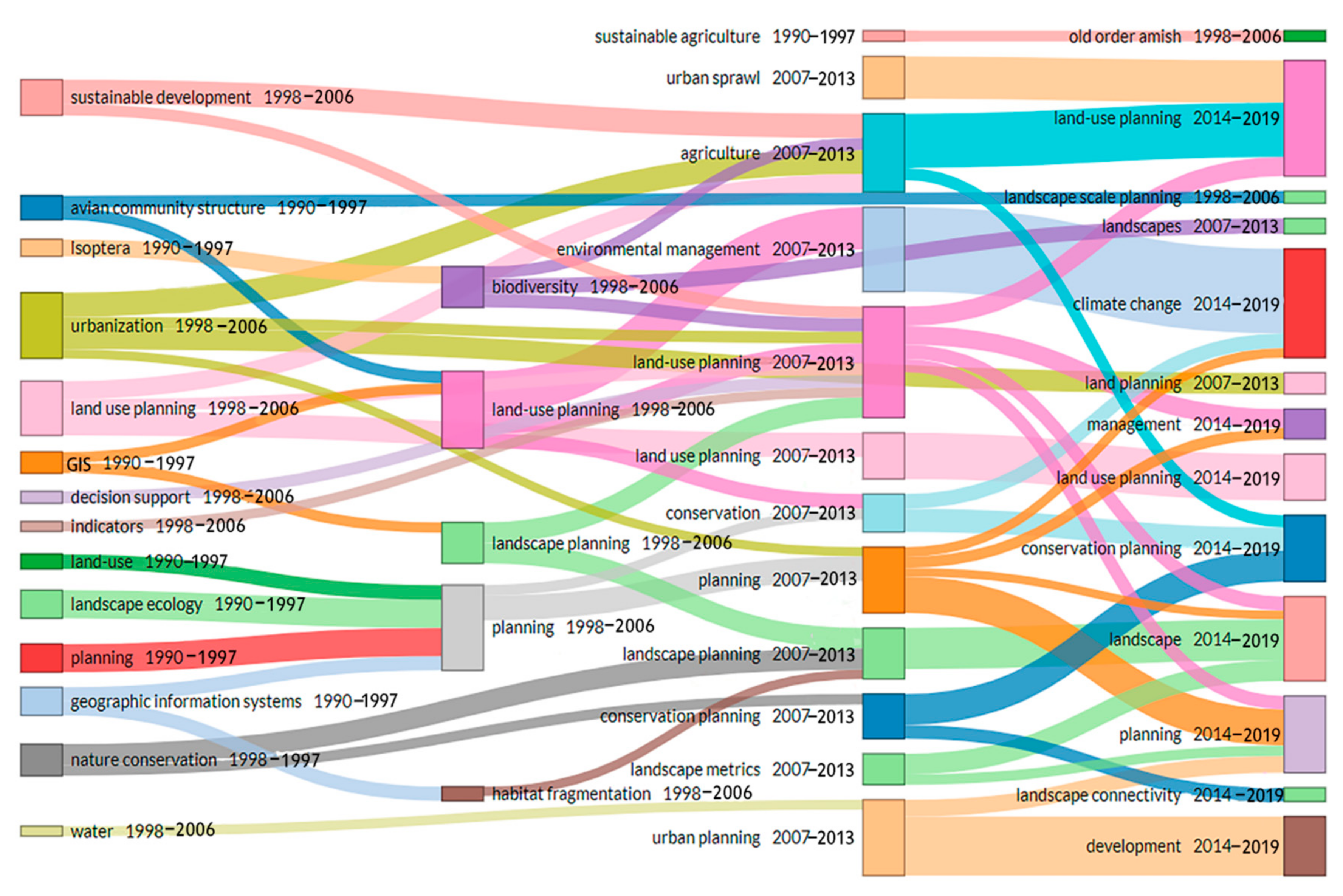
| Paper | DOI | Year | LCS | GCS |
|---|---|---|---|---|
| STEWART TJ, 2004, COMPUT OPER RES | 10.1016/S0305-0548(03)00188-6 | 2004 | 17 | 180 |
| CHRISTOU MD, 1999, J HAZARD MATER | 10.1016/S0304-3894(98)00261-1 | 1999 | 14 | 52 |
| DAI FC, 2001, ENG GEOL | 10.1016/S0013-7952(01)00028-X | 2001 | 14 | 239 |
| COZZANI V, 2006, J HAZARD MATER | 10.1016/j.jhazmat.2005.12.031 | 2006 | 13 | 57 |
| BASTA C, 2007, J HAZARD MATER | 10.1016/j.jhazmat.2006.11.032 | 2007 | 10 | 33 |
| LESTRELIN G, 2011, APPL GEOGR | 10.1016/j.apgeog.2011.01.003 | 2011 | 10 | 34 |
| HAUPTMANNS U, 2005, J HAZARD MATER | 10.1016/j.jhazmat.2005.05.015 | 2005 | 8 | 21 |
| PIERCE SM, 2005, BIOL CONSERV | 10.1016/j.biocon.2005.04.019 | 2005 | 8 | 119 |
| MARSCHALKO M, 2009, ACTA MONTAN SLOVACA | (NONE) | 2009 | 8 | 17 |
| SEBOS I, 2010, J HAZARD MATER | 10.1016/j.jhazmat.2010.03.091 | 2010 | 8 | 20 |
| Number of Authors | Proportion of Authors |
|---|---|
| 3504 | 0.902 |
| 273 | 0.07 |
| 59 | 0.015 |
| 20 | 0.005 |
| 15 | 0.004 |
| 3 | 0.001 |
| 4 | 0.001 |
| 3 | 0.001 |
| 3 | 0.001 |
| 1 | 0 |
| Country | Number of Articles | Frequency | Total Citations | Average Citations |
|---|---|---|---|---|
| USA | 356 | 0.207338 | 7785 | 21.87 |
| China | 176 | 0.102504 | 2564 | 14.57 |
| Italy | 107 | 0.062318 | 1537 | 14.36 |
| Australia | 102 | 0.059406 | 1989 | 19.50 |
| UK | 79 | 0.04601 | 1784 | 22.58 |
| Germany | 76 | 0.044263 | 1583 | 20.83 |
| Canada | 68 | 0.039604 | 931 | 13.69 |
| Netherlands | 67 | 0.039022 | 4029 | 60.13 |
| Spain | 58 | 0.03378 | 2129 | 36.71 |
| Turkey | 42 | 0.024461 | 357 | 8.50 |
| Sweden | 41 | 0.023879 | 807 | 19.68 |
| Finland | 35 | 0.020384 | 1118 | 31.94 |
| India | 35 | 0.020384 | 233 | 6.66 |
| Iran | 34 | 0.019802 | 316 | 9.29 |
| Switzerland | 27 | 0.015725 | 654 | 24.22 |
| France | 25 | 0.01456 | 371 | 14.84 |
| Portugal | 25 | 0.01456 | 297 | 11.88 |
| South Africa | 25 | 0.01456 | 793 | 31.72 |
| Japan | 24 | 0.013978 | 407 | 16.96 |
| Israel | 20 | 0.011648 | 293 | 14.65 |
Publisher’s Note: MDPI stays neutral with regard to jurisdictional claims in published maps and institutional affiliations. |
© 2021 by the authors. Licensee MDPI, Basel, Switzerland. This article is an open access article distributed under the terms and conditions of the Creative Commons Attribution (CC BY) license (http://creativecommons.org/licenses/by/4.0/).
Share and Cite
Lv, T.; Wang, L.; Xie, H.; Zhang, X.; Zhang, Y. Exploring the Global Research Trends of Land Use Planning Based on a Bibliometric Analysis: Current Status and Future Prospects. Land 2021, 10, 304. https://doi.org/10.3390/land10030304
Lv T, Wang L, Xie H, Zhang X, Zhang Y. Exploring the Global Research Trends of Land Use Planning Based on a Bibliometric Analysis: Current Status and Future Prospects. Land. 2021; 10(3):304. https://doi.org/10.3390/land10030304
Chicago/Turabian StyleLv, Tiangui, Li Wang, Hualin Xie, Xinmin Zhang, and Yanwei Zhang. 2021. "Exploring the Global Research Trends of Land Use Planning Based on a Bibliometric Analysis: Current Status and Future Prospects" Land 10, no. 3: 304. https://doi.org/10.3390/land10030304
APA StyleLv, T., Wang, L., Xie, H., Zhang, X., & Zhang, Y. (2021). Exploring the Global Research Trends of Land Use Planning Based on a Bibliometric Analysis: Current Status and Future Prospects. Land, 10(3), 304. https://doi.org/10.3390/land10030304








